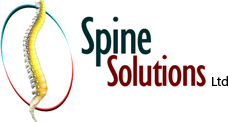-
 Spinal Injections
Spinal InjectionsA spinal infection is described as an infection of the spine. It can occur in various locations of the spine i.e., intervertebral disc space, vertebral column, spinal canal, and nearby soft tissues.
-
 Lumbar Medial Branch Block
Lumbar Medial Branch BlockA medial branch block is a procedure in which a mixture of a local anesthetic with or without a corticosteroid is injected near the medial branch nerves supplying a facet joint.
-
 Lumbar Discectomy
Lumbar DiscectomyA lumbar discectomy is a surgical procedure performed to treat a herniated or ruptured disc and relieve pressure on the spinal nerves.
-
 Lumbar Laminectomy
Lumbar LaminectomyLumbar laminectomy, also known as decompression laminectomy, is a spinal surgery performed to relieve excess pressure on the spinal nerve(s) in the lumbar (lower back) region.
-
 Lumbar Foraminotomy
Lumbar ForaminotomyA lumbar foraminotomy is a surgical procedure that decompresses the spinal nerves by removing bone and other tissues that obstruct the neural foramen.
-
 Lumbar Decompression
Lumbar DecompressionLumbar decompression is a surgical procedure performed to relieve pressure over the compressed nerves in the lower spine (lumbar region).
-
 Removal of Facet Joint Cyst
Removal of Facet Joint CystTo remove the cyst and relieve pressure on the spinal cord or spinal nerves your doctor will perform a procedure called microdecompression. This is often followed by fusion of the adjacent vertebrae to avoid recurrence of the cyst.
-
 Lower Back Pain Surgery
Lower Back Pain SurgeryLower back pain can be disabling; however, most cases heal with time (2-12 weeks) and with conservative therapy. However, surgery is suggested when symptoms persist and begin to affect your daily activities.
-
 Lumbar Fusion
Lumbar FusionSpinal fusion, also called arthrodesis, is a surgical technique used to join two or more vertebrae (bones) within the spine.
-
 Transforaminal Lumbar Interbody Fusion (TLIF)
Transforaminal Lumbar Interbody Fusion (TLIF)Transforaminal lumbar interbody fusion (TLIF) is a type of spinal fusion procedure in which bone graft is placed between the affected vertebrae in the lower back (lumbar) region through an incision on the patient’s back.
-
 Posterior Lumbar Interbody Fusion
Posterior Lumbar Interbody FusionIn PLIF, several 1-2-inch incisions are made on the back, a series of increasingly larger dilators are used to spread the muscles apart and provide access to the spine.
-
 Posterolateral Lumbar Fusion
Posterolateral Lumbar FusionPosterolateral lumbar fusion is a surgical technique that involves correcting spinal problems from the back of the spine by placing bone graft between segments in the back and leaving the disc space intact.
-
 Lumbar Interbody Fusion
Lumbar Interbody FusionLumbar interbody fusion (LIF) surgery is a surgical technique that involves the removal of a damaged intervertebral disc and the insertion of a bone graft into the disc space created between the two adjoining vertebrae.
-
 Anterior Lumbar Interbody Fusion
Anterior Lumbar Interbody FusionAnterior lumbar interbody fusion (ALIF) is a surgery performed to correct spinal problems in the lower back. The surgery can be implemented either as an open surgery or minimally invasive technique.
-
 Minimally Invasive TLIF
Minimally Invasive TLIFTransforaminal lumbar interbody fusion (TLIF) is a minimally invasive fusion of the vertebrae of the lumbar region (lower back). It is designed to provide stability to the spine and treat back and leg pain.
-
 Lumbar Corpectomy and Fusion
Lumbar Corpectomy and FusionLumbar corpectomy and fusion is a surgical technique performed to remove the vertebral bone or disc material between the vertebrae to alleviate pressure on the spinal cord and spinal nerves (decompression) in the lumbar (lower back) region.
-
 Vertebroplasty
VertebroplastyVertebroplasty is a minimally invasive procedure performed to reduce or eliminate pain caused by a vertebral compression fracture. It stabilizes the fracture and prevents further collapse of the vertebra, averting deformity.
-
 Kyphoplasty
KyphoplastyBalloon kyphoplasty is a spine surgery that relieves back pain caused by a vertebral compression fracture. The aim of balloon kyphoplasty is to relieve pain, stabilize the fracture and restore the vertebral body height.
-
 Radiofrequency Denervation (Rhizolysis)
Radiofrequency Denervation (Rhizolysis)Coming soon
-
 Lumbar Facet Injection
Lumbar Facet Injection Coming soon
-
 Posterior Lumbar Fusion
Posterior Lumbar FusionComing soon

